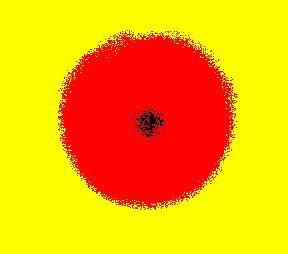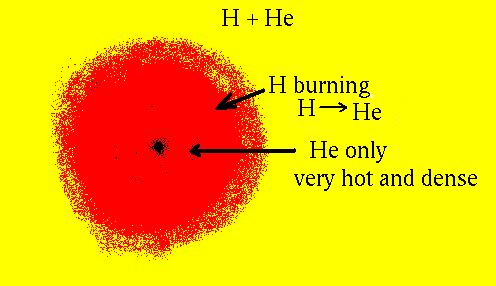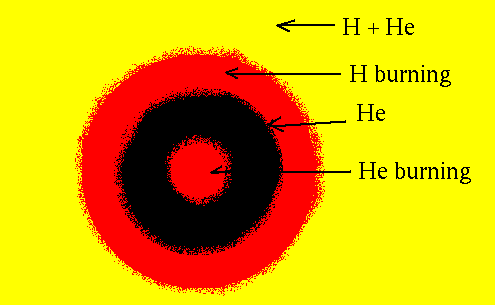
Here is a cartoon of the center of the Sun after 10 bilion years. H is burning everywhere except at the very middle. At this point, the Sun is somewhat larger and hotter than it is now.

Here is a cartoon of the center of the Sun after 10 bilion years. H is
burning everywhere except at the very middle. At this point, the Sun is
somewhat larger and hotter than it is now.

As more and more H is used up in the middle, the middle shrinks under gravity and gets very compressed and very hot. This makes the surrounding shell of hydrogen rich gas hotter, and hydrogen burning increases.
The Sun's luminosity increases enormously. The middle layers are so hot that they expand, dispite gravity. The outer layers are pushed out to a radius of roughly 1 AU. At this distance away from the hot central core, the surface is cooler than the surface of the present Sun. The Sun is now a red giant.

This will have a rather unfortunate effect on life on Earth.


In a star the mass of the Sun, this process starts very suddenly in the tiny core (The helium flash). Afterwards, the hydrogen burning shell produces less energy and the star's surface becomes smaller and hotter. (The star's position on the HR diagram is in the horizontal branch.
Davison E. Soper, Institute of Theoretical Science, University of Oregon, Eugene OR 97403 USA soper@bovine.uoregon.edu